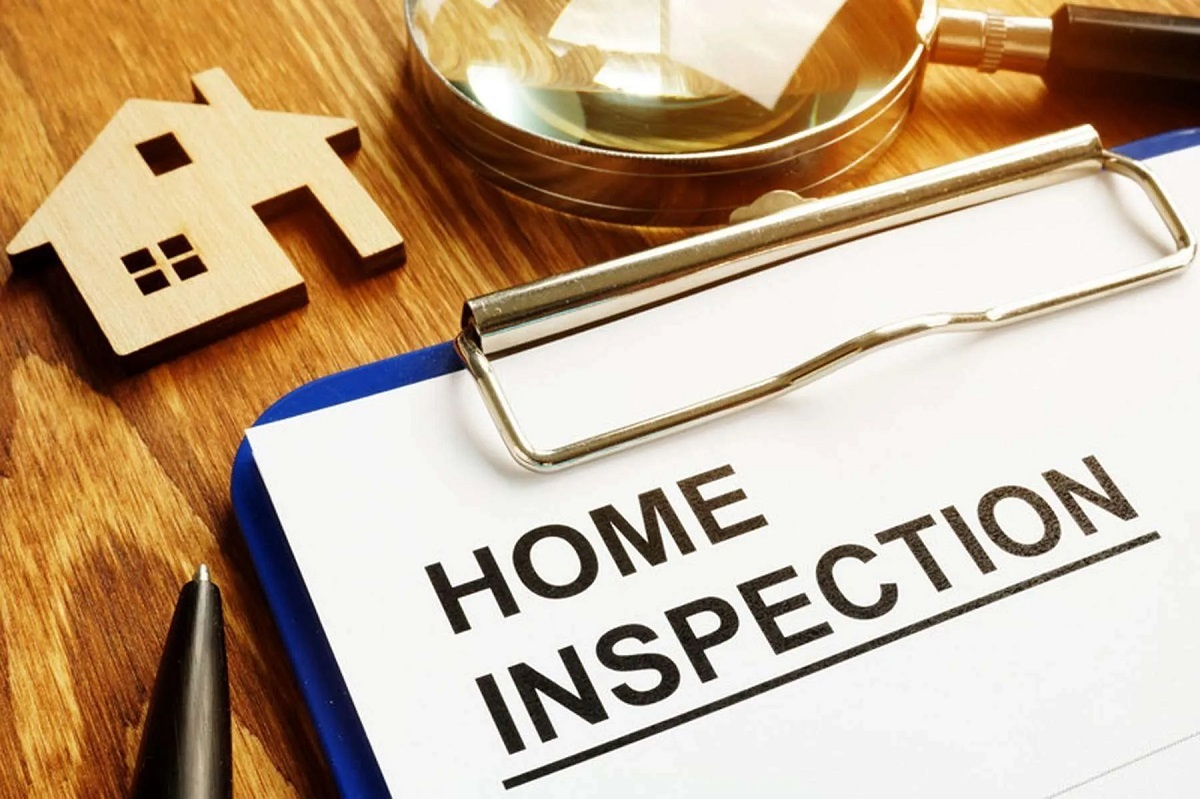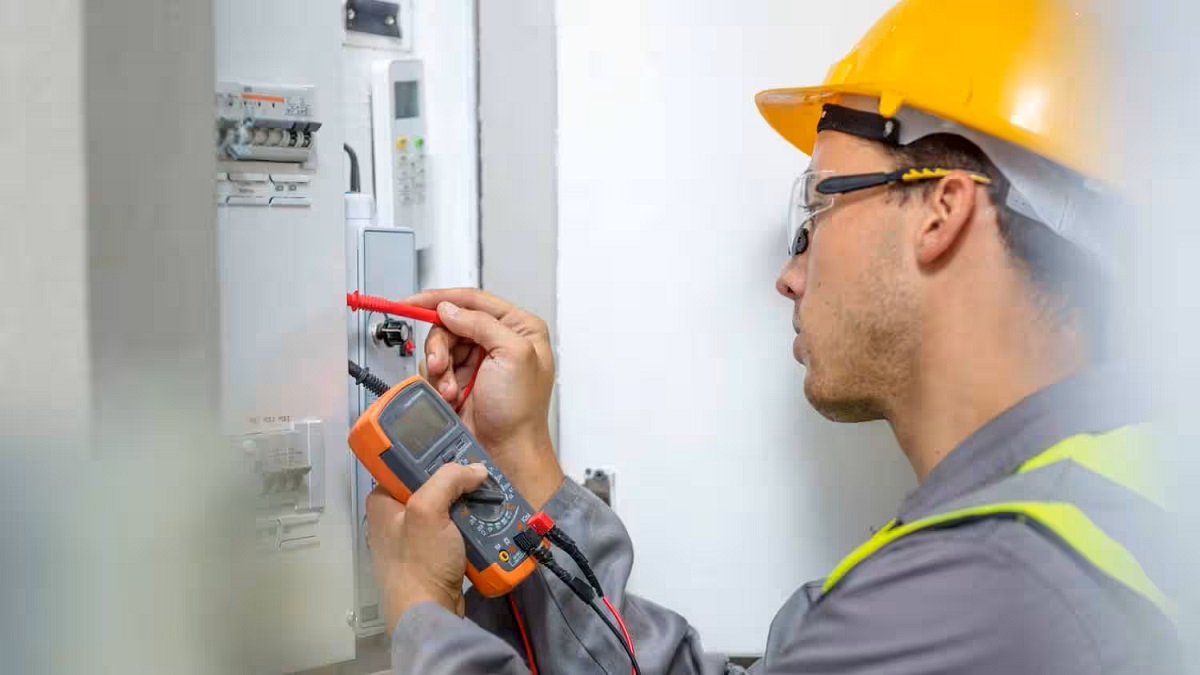Home>Home Maintenance>What Is Involved In A Toyota Buyer’s Inspection?


Home Maintenance
What Is Involved In A Toyota Buyer’s Inspection?
Modified: December 13, 2023
A Toyota buyer's inspection covers all essential home maintenance checks to ensure the vehicle's reliability and safety. Trust our expert technicians to thoroughly assess every aspect before making your purchase.
(Many of the links in this article redirect to a specific reviewed product. Your purchase of these products through affiliate links helps to generate commission for Storables.com, at no extra cost. Learn more)
**
Introduction
**
Purchasing a Toyota vehicle is an exciting endeavor, but it’s essential to ensure that the car you’re eyeing is in top-notch condition. This is where a Toyota buyer's inspection comes into play. This comprehensive examination is designed to provide potential buyers with a detailed overview of the vehicle’s condition, helping them make an informed decision before sealing the deal.
A Toyota buyer's inspection involves a thorough assessment of the car's exterior, interior, and mechanical components, as well as a test drive to evaluate its performance on the road. The final report and recommendations from the inspection serve as invaluable insights for the buyer, shedding light on any existing issues and potential maintenance requirements.
In the following sections, we’ll delve into the key aspects of a Toyota buyer's inspection, outlining the crucial elements of each stage and highlighting the significance of this process in ensuring a seamless and satisfactory purchase experience. Whether you’re considering a new or used Toyota, this inspection serves as a vital step in your journey towards owning a reliable and well-maintained vehicle.
**
Key Takeaways:
- Ensure a Toyota’s condition with a buyer’s inspection covering exterior, interior, mechanical components, and a test drive. The final report provides valuable insights for a confident purchase.
- A Toyota buyer’s inspection offers a comprehensive evaluation of the vehicle’s condition, empowering buyers with valuable insights and recommendations for a seamless and informed purchase experience.
Read more: What Is A Buyer’s Inspection Advisory?
Exterior Inspection
**
When conducting a Toyota buyer’s inspection, the exterior of the vehicle is the first aspect that captures attention. This phase involves a meticulous evaluation of the car’s exterior features, aiming to identify any visible damage, signs of wear and tear, or potential issues that may impact the vehicle’s aesthetics and structural integrity.
Key Areas of Focus
- Body and Paint: The inspector carefully examines the body panels, assessing for dents, scratches, or inconsistencies in the paint finish. Any signs of repainting or mismatched colors could indicate previous damage or repairs.
- Windows and Glass: The condition of the windshield, windows, and glass components is assessed for cracks, chips, or delamination. Properly functioning window mechanisms and weather stripping are also examined.
- Lights and Signals: The functionality of all exterior lights, including headlights, taillights, turn signals, and brake lights, is tested to ensure they operate as intended.
- Tires and Wheels: The tire tread depth, overall condition of the tires, and the integrity of the wheels are inspected. This includes checking for uneven wear, bulges, or sidewall damage.
- Undercarriage and Suspension: A visual inspection of the undercarriage and suspension components is conducted to detect any signs of corrosion, leaks, or damage to critical mechanical parts.
Importance of the Exterior Inspection
Thoroughly examining the exterior of a Toyota vehicle is crucial in determining its overall condition and potential maintenance needs. Identifying exterior issues during the inspection allows the buyer to make informed decisions regarding necessary repairs, negotiate the selling price, or seek professional assistance for addressing any identified concerns.
By scrutinizing the exterior elements, the buyer gains a comprehensive understanding of the vehicle’s cosmetic and structural state, paving the way for a transparent and well-informed purchasing process.
**
Interior Inspection
**
As the inspection process continues, the interior of the Toyota vehicle takes center stage. This phase involves a detailed assessment of the car’s interior features, aiming to uncover any issues related to comfort, functionality, and overall condition. From the upholstery to the electronic components, every aspect is scrutinized to ensure a comprehensive evaluation.
Key Areas of Focus
- Upholstery and Trim: The condition of the seats, carpets, and interior trim is carefully examined for signs of wear, stains, or damage. This includes assessing the functionality of seat adjustments and the condition of headrests and armrests.
- Dashboard and Controls: The functionality of the dashboard instruments, control buttons, knobs, and switches is tested to ensure proper operation. Any malfunctions or non-responsive controls are noted for further evaluation.
- Infotainment and Audio Systems: The performance of the audio system, including speakers, radio, and connectivity features, is assessed. The functionality of infotainment screens, navigation systems, and climate control interfaces is also examined.
- Safety Features: The presence and functionality of safety features such as airbags, seat belts, and child safety locks are inspected to ensure they meet safety standards and operational requirements.
- Cabin Odors and Noise: The interior is assessed for any unusual odors, such as musty smells or signs of mold. Additionally, the presence of excessive road noise or rattling components is noted for further investigation.
Importance of the Interior Inspection
Examining the interior of a Toyota vehicle is essential for gauging its overall comfort, functionality, and safety features. Uncovering any interior issues during the inspection allows the buyer to address potential concerns, negotiate effectively, or plan for necessary repairs or maintenance.
By thoroughly evaluating the interior components, the buyer gains valuable insights into the vehicle’s overall condition, ensuring a transparent and informed decision-making process.
**
When conducting a Toyota buyer’s inspection, be sure to check the vehicle’s service history, inspect for any signs of damage or wear, test drive the car, and have a trusted mechanic perform a thorough inspection for any potential issues.
Mechanical Inspection
**
As the Toyota buyer’s inspection progresses, the focus shifts towards the mechanical components of the vehicle. This critical phase involves a comprehensive evaluation of the car’s engine, drivetrain, suspension, and other vital systems to assess their functionality, performance, and overall condition.
Key Areas of Focus
- Engine and Transmission: The inspector assesses the engine’s performance, looking for signs of smooth operation, unusual noises, or fluid leaks. The functionality of the transmission, including smooth gear shifts and clutch operation (if applicable), is also evaluated.
- Braking System: The condition of the brake pads, rotors, calipers, and brake lines is inspected to ensure optimal braking performance. The functionality of the anti-lock braking system (ABS) is also tested.
- Steering and Suspension: The steering system’s responsiveness and the overall condition of the suspension components, including shocks, struts, and control arms, are examined for signs of wear, damage, or alignment issues.
- Fluids and Leaks: The levels and condition of vital fluids such as engine oil, transmission fluid, brake fluid, and coolant are checked. Any signs of leaks or fluid seepage are noted for further investigation.
- Exhaust System: The exhaust system is inspected for signs of corrosion, leaks, or damage. The presence of excessive exhaust smoke or unusual odors is also documented.
Importance of the Mechanical Inspection
Assessing the mechanical components of a Toyota vehicle is crucial for understanding its overall performance, safety, and maintenance requirements. Identifying any mechanical issues during the inspection empowers the buyer to make informed decisions, negotiate effectively, or plan for necessary repairs and maintenance.
By thoroughly evaluating the mechanical systems, the buyer gains valuable insights into the vehicle’s reliability and operational condition, ensuring a confident and well-informed purchasing process.
**
Test Drive
**
The pivotal stage of a Toyota buyer’s inspection is the test drive, offering the opportunity to experience the vehicle’s performance firsthand. This immersive phase allows the potential buyer to assess the car’s handling, responsiveness, and overall driving dynamics, providing valuable insights into its on-road behavior and functionality.
Key Aspects of the Test Drive
- Acceleration and Braking: The test drive involves evaluating the car’s acceleration, braking responsiveness, and overall handling in various driving conditions, including city streets and highways.
- Steering and Maneuverability: The responsiveness of the steering system and the vehicle’s maneuverability are assessed, allowing the driver to gauge the ease of navigation and control.
- Noise and Vibration: Any unusual noises, vibrations, or rattles during the test drive are noted, providing indications of potential mechanical or operational issues.
- Electronic Systems: The functionality of electronic systems, including dashboard displays, infotainment features, and driver assistance technologies, is evaluated during the test drive.
- Comfort and Ergonomics: The overall comfort, seating ergonomics, and interior noise levels are experienced to gauge the driving experience from a holistic perspective.
Importance of the Test Drive
Conducting a thorough test drive is instrumental in understanding the vehicle’s real-world performance and assessing its alignment with the buyer’s expectations. The test drive serves as a practical validation of the car’s condition and functionality, allowing the buyer to make an informed decision based on firsthand driving experiences.
By immersing in the test drive experience, the potential buyer gains crucial insights into the vehicle’s on-road behavior, comfort, and overall driving satisfaction, ensuring a well-rounded assessment before finalizing the purchase.
**
Final Report and Recommendations
**
Upon completing the comprehensive Toyota buyer’s inspection, the inspector provides a final report and recommendations to the potential buyer. This detailed overview encapsulates the findings and insights gathered during the inspection process, offering a comprehensive assessment of the vehicle’s condition and highlighting any areas of concern or maintenance requirements.
Contents of the Final Report
The final report encompasses a summary of the inspection, including detailed observations and assessments of the exterior, interior, and mechanical components of the Toyota vehicle. It may include photographic evidence of any identified issues, providing visual clarity to the buyer.
Key Components of the Recommendations
- Maintenance Requirements: The recommendations outline any immediate maintenance needs or upcoming service requirements based on the inspection findings. This may include suggested repairs, fluid replacements, or component servicing.
- Safety and Operational Concerns: Any safety-related concerns or operational issues identified during the inspection are highlighted, offering insights into critical areas that may require attention before the vehicle is deemed roadworthy.
- Long-Term Considerations: Recommendations for long-term maintenance, such as timing belt replacements, suspension servicing, or fluid flushes, may be included to provide the buyer with a comprehensive understanding of the vehicle’s future maintenance needs.
- Negotiation and Decision-Making: The report may offer guidance for negotiation based on the inspection findings, empowering the buyer to make informed decisions regarding the purchase price, potential repairs, or further professional assessments.
Significance of the Final Report and Recommendations
The final report and recommendations serve as invaluable resources for the potential buyer, offering a transparent and detailed overview of the vehicle’s condition and maintenance requirements. By providing actionable insights and guidance, the report enables the buyer to navigate the purchasing process with confidence and clarity.
Empowered with the information from the final report, the potential buyer can make informed decisions, negotiate effectively, and plan for any necessary maintenance or repairs, ensuring a seamless and satisfactory purchase experience.
Frequently Asked Questions about What Is Involved In A Toyota Buyer's Inspection?
Was this page helpful?
At Storables.com, we guarantee accurate and reliable information. Our content, validated by Expert Board Contributors, is crafted following stringent Editorial Policies. We're committed to providing you with well-researched, expert-backed insights for all your informational needs.















0 thoughts on “What Is Involved In A Toyota Buyer’s Inspection?”